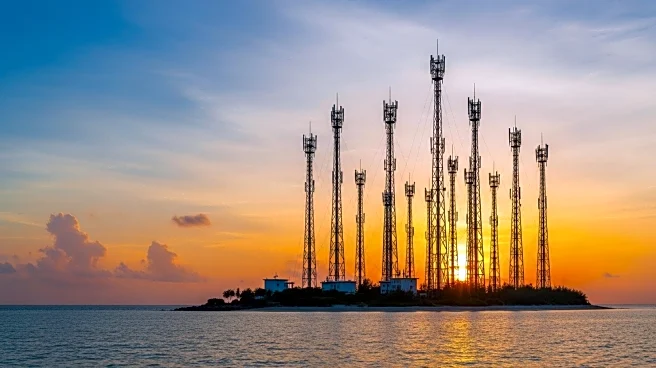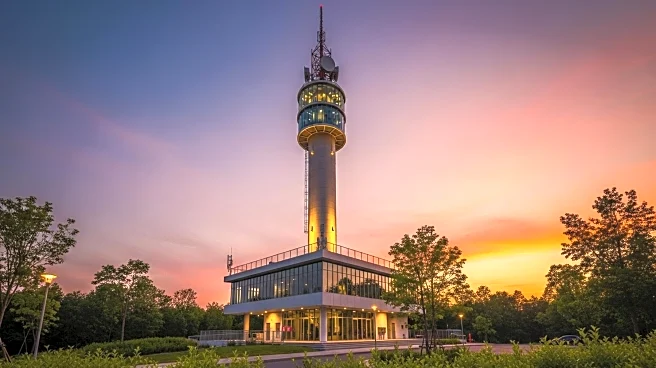What's Happening?
IHS Brazil, in collaboration with major mobile operators Claro, Vivo, and TIM, has installed a shared telecommunications tower on Ilha do Combu, a significant step towards improving connectivity in the region. The initiative aims to provide 4G and 5G coverage to the island, which is located near Belém and is home to around 600 families. The project addresses the logistical and environmental challenges of setting up infrastructure in a riverine and biologically diverse area. The new tower is designed to minimize environmental impact by having a smaller base and integrating equipment within the structure. This development is expected to enhance local services such as digital education, telemedicine, and financial transactions, while also boosting tourism, especially with the upcoming COP 30 conference in Belém.
Why It's Important?
The installation of the shared tower is a significant advancement for the residents of Combu, providing them with improved access to modern telecommunications services. This development is crucial for social inclusion and economic development, as it enables better access to education, healthcare, and financial services. The project also demonstrates a sustainable approach to infrastructure development by reducing environmental impact through shared resources. The enhanced connectivity is expected to attract more visitors to the island, particularly during major events like COP 30, thereby boosting the local economy. This model of infrastructure sharing could serve as a blueprint for similar projects in other remote regions of the Amazon, promoting sustainable development and connectivity.
What's Next?
With the successful implementation of the shared tower on Combu, there is potential for this model to be replicated in other parts of the Amazon region. The project partners, including IHS Brazil and the state government of Pará, may explore further collaborations to extend connectivity to other underserved areas. The upcoming COP 30 conference will likely bring increased attention to the region, highlighting the importance of sustainable infrastructure solutions. Stakeholders may also focus on monitoring the impact of the new connectivity on local communities and exploring additional services that can be offered through the enhanced network.










